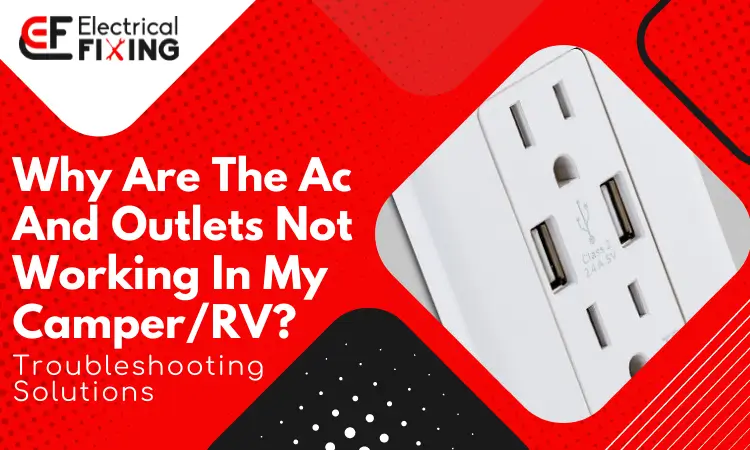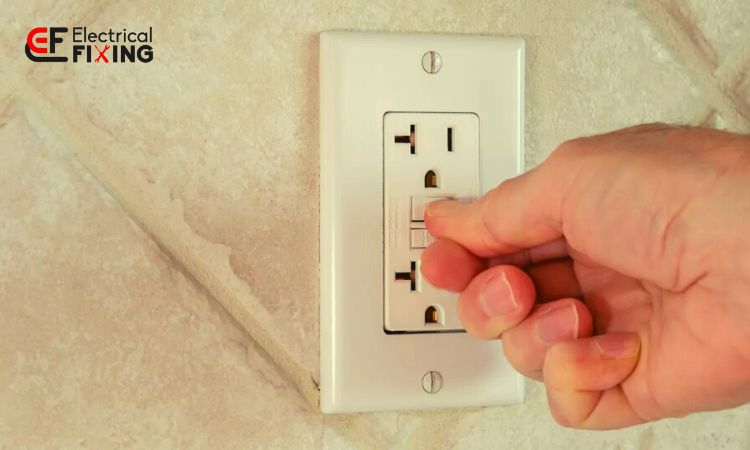Hey there! This post contains affiliate links to products. We may receive a commission for purchases made through these links. But it never influences our product selection process.
Are you struggling to locate a hidden GFCI outlet in your home? Don’t worry, you’re not alone. GFCI outlets, also known as ground fault circuit interrupters, play a crucial role in electrical safety by protecting against electric shocks and potential hazards. However, they can sometimes be elusive, tucked away in inconspicuous locations.
So, how to find a hidden gfci outlet?
In this article, I’ll guide you through the process of finding those hidden GFCI outlets step-by-step, ensuring your electrical safety and peace of mind.
Where Is the GFCI Located for Outdoor Outlets?
Let’s start with outdoor outlets, as they are a common area where GFCI outlets are installed. If you’re unable to find the GFCI outlet for your outdoor receptacles, follow these steps:
- Check the nearby areas: Begin by inspecting the exterior walls of your home. Look for GFCI outlets in the vicinity of the outdoor receptacles, paying close attention to areas that are exposed to moisture or located near water sources.
- Search for weatherproof covers: GFCI outlets installed outdoors are usually protected by weatherproof covers. Look for rectangular or round covers that may blend with the surroundings. Open these covers to reveal the GFCI outlet.
- Inspect the garage: Some outdoor outlets are connected to a GFCI outlet in the garage. Check your garage for GFCI outlets near the location of the outdoor receptacles.
- Consider hidden locations: In certain cases, GFCI outlets for outdoor receptacles may be installed inside the house. Look for GFCI outlets in areas adjacent to the outdoor walls, such as basements, crawlspaces, or utility rooms.
How to Find a Hidden GFCI Outlet – Step-by-Step

To locate hidden GFCI outlets throughout your home, follow these step-by-step instructions:
- Start with obvious locations: Begin your search by checking the obvious places where GFCI outlets are commonly found. These include kitchens, bathrooms, laundry rooms, garages, and outdoor areas. Look for GFCI outlets near water sources, countertops, and utility areas.
- Inspect visible outlets: Examine all the visible outlets in your home. While they may appear to be standard outlets, they could be GFCI-protected. Press the “Test” and “Reset” buttons on each outlet to see if it trips or resets, indicating the presence of a hidden GFCI outlet.
- Check circuit breaker panel: GFCI outlets can be connected to specific circuit breakers. Open your electrical panel and search for breakers labeled “GFCI” or “GFI.” If you find any, test and reset them to locate the corresponding hidden GFCI outlet.
- Investigate crawlspaces and basements: Crawlspaces and basements are potential hiding spots for GFCI outlets. Be cautious while exploring these areas and search for GFCI outlets near electrical panels, water heaters, or other utility connections.
- Explore attics and storage spaces: Attics and storage areas may house GFCI outlets. Exercise caution and use appropriate safety measures when accessing these spaces. Look for GFCI outlets near HVAC equipment, lighting fixtures, or utility access points.
(Note: If you’re unsure about any step or encounter difficulties, it’s recommended to consult a professional electrician for assistance.)
Checking Obvious GFCI Outlet Locations
Let’s dive deeper into the common areas where GFCI outlets are typically found:
Kitchen
In the kitchen, check these locations for hidden GFCI outlets:
- Countertops and backsplashes: Look for GFCI outlets within reach of your kitchen work areas.
- Near sinks and dishwashers: Check for GFCI outlets within a few feet of your kitchen sink or dishwasher.
Bathroom
The bathroom is another crucial area to inspect for hidden GFCI outlets:
- Near sinks, bathtubs, and showers: GFCI outlets are often installed close to these water sources to protect against electrical accidents.
- Behind cabinets or mirrors: Don’t forget to search behind cabinets or mirrors, as GFCI outlets may be concealed in these areas.
Laundry Room
In the laundry room, focus your search on the following spots:
- Close to washing machines and dryers: Look for GFCI outlets near your laundry appliances to ensure electrical safety.
- Utility sinks and areas with water connections: Check around utility sinks and areas where water connections are present.
Garage
Inspect the garage for hidden GFCI outlets:
- Areas near water sources: Check for GFCI outlets near sinks, utility sinks, or areas with water connections.
- Workbenches and power tool stations: GFCI outlets are often installed near workbenches and areas where power tools are used.
Outdoor Areas
Don’t forget to search for hidden GFCI outlets in your outdoor spaces:
- Patios, decks, and gardens: Look for GFCI outlets near these outdoor recreational areas.
- Poolside and near hot tubs: Ensure electrical safety by locating GFCI outlets near pools or hot tubs.
Exploring Less Obvious GFCI Outlet Locations
Now, let’s explore some less obvious locations where hidden GFCI outlets may be located:
Electrical Panels and Subpanels
Take a closer look at your electrical panels and subpanels:
- Searching for GFCI breakers: Inspect your electrical panel for breakers labeled “GFCI” or “GFI.” These breakers may be connected to hidden GFCI outlets.
- Understanding GFCI breaker wiring: Familiarize yourself with the wiring configuration of GFCI breakers to identify potential hidden outlets.
Crawlspaces and Basements
Crawlspaces and basements are often overlooked areas housing hidden GFCI outlets:
- Investigating hidden outlets in these areas: Closely examine crawlspaces and basements for GFCI outlets near electrical panels, water heaters, or utility connections.
- Tips for navigating confined spaces safely: Prioritize your safety by wearing appropriate protective gear and using adequate lighting while exploring these areas.
Attics and Storage Spaces
Don’t forget to search for GFCI outlets in attics and storage spaces:
- Examining GFCI outlets in these locations: Look for GFCI outlets near HVAC equipment, lighting fixtures, or areas with utility access points.
- Precautions while accessing higher areas: Exercise caution when accessing attics or elevated storage spaces. Use stable ladders or platforms and be mindful of your surroundings.
Seeking Assistance from Professionals
If you’re unable to locate hidden GFCI outlets on your own or encounter difficulties during the process, it’s advisable to seek assistance from professional electricians. They possess the expertise and tools to identify and resolve GFCI outlet-related issues effectively. Professional help ensures the utmost safety and peace of mind for you and your household.
Frequently Asked Questions (FAQs):
How can I tell if an outlet is GFCI protected?
GFCI outlets usually have “Test” and “Reset” buttons. Pressing the “Test” button should cause the outlet to trip, cutting off power. Pressing “Reset” restores power.
Can a GFCI outlet be hidden behind furniture or appliances?
Yes, it’s possible for GFCI outlets to be located behind furniture, appliances, or other objects. Ensure thorough inspection and accessibility when searching for hidden outlets.
Is it safe to reset a tripped GFCI outlet myself?
Yes, you can reset a tripped GFCI outlet by pressing the “Reset” button. However, if it continues to trip or exhibits other issues, it’s recommended to consult a professional electrician.
Do all homes have GFCI outlets?
GFCI outlets may not be present in older homes but are commonly found in newer constructions. It’s essential to ensure proper GFCI protection throughout your home for electrical safety.
How often should I test my GFCI outlets?
It’s advisable to test your GFCI outlets at least once a month to ensure they are functioning correctly. Additionally, test them after power outages or electrical storms.
Conclusion
Finding hidden GFCI outlets may seem like a challenging task, but with the right knowledge and systematic approach, it can be accomplished. By checking obvious locations, exploring less obvious areas, and seeking professional assistance when needed, you can ensure the safety and functionality of your electrical system.
In conclusion, finding hidden GFCI outlets is crucial for ensuring electrical safety in your home. By following the steps outlined in this article, you’ll be able to locate these outlets, test their functionality, and take appropriate measures to maintain a safe electrical environment.
Hey, I’m Steven Jones, the founder, and writer of this site. I have worked in Electrical for the past 5 years. I also know how to save energy and how to troubleshoot our electrical devices. I hope you enjoy my blog.



